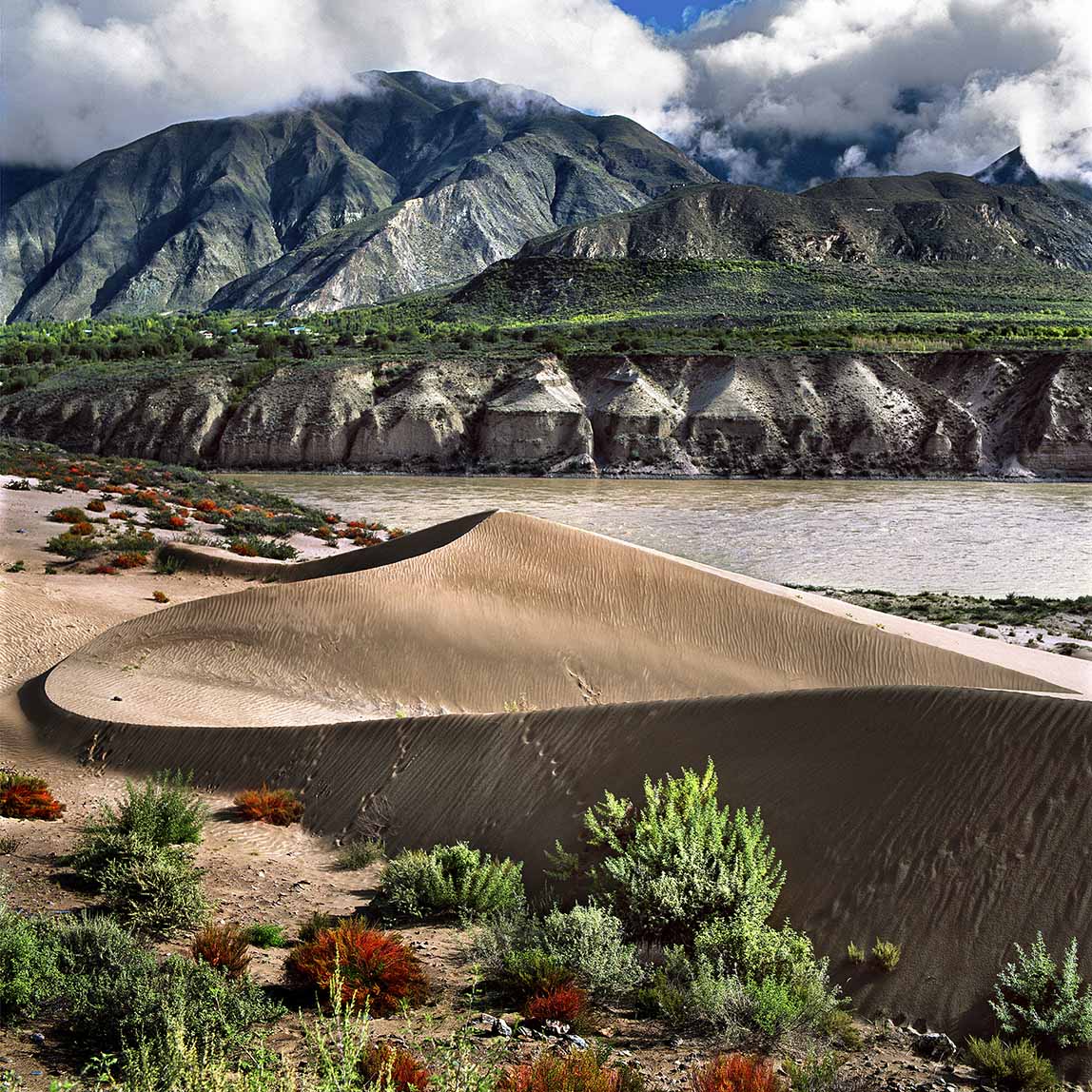
Sacred water
The Himalayan imagination is steeped in this fertile shamanic soil which long predates the modern, scholarly religions which subsequently flourished in the Himalayas. Although very diverse, the peoples of the Himalayas have in common an ancestral background of values and associations based on their experience of the world: day and night, heaven and earth, fire and water, man and woman; so many pairs combining and contrasting the masculine and feminine principles, the inseparable facets of life.
Like many peoples, they believe that water originally covered the surface of the earth, and that it was in this initial cradle that the world was born. As an indiscriminate, chaotic mass, the water of the original ocean represents an infinity of possibilities. It contains all the future, and all the promises of development.
Water is the fertilizing, regenerating element par excellence. A universal symbol of fertility, water is associated with the maternal and feminine aspect of the world, like the moon and the night.
The Himalayan peoples also share a vision of the organisation of the world divided into three levels: overhead, the sky, the kingdom of the gods; in the middle on earth, men; and underfoot, the dark domain of the underground forces.
This almost universal concept finds a particular echo in the Himalayas. Here, towering upwards, the earth seems to touch the sky. Halfway between the human world and the sky, the high mountains constitute a sacred land. These high peaks, inaccessible to men, are the domain of powerful, benevolent but also fearsome spirits.
The people who settled at the foot of these stone giants did so with great fear and respect. These extreme lands are made for wonders; the landscape is inhabited by supernatural forces that manifest themselves in so many majestic peaks, lakes of clear water, hidden caves, magic stones, stalactites of ice and eternal flames of gas spurting from the ground.
Of all these divine manifestations, the most precious is water. It’s the greatest gift of the benevolent spirits which surround us.
When entering these mountains, Hinduism and Buddhism had to deal with ancestral beliefs, the deities associated with the soil, the ancestors protecting the clans, and the shamanic healers, capable of speaking to the Spirits, of countering spells, and of making the rain fall. In the Himalayan valleys, ideas were spread by the caravans, peddlers, and pilgrims who have always travelled with their myths, religions, holy books and amulets. The peoples of the Himalayas have never stopped borrowing divinities, renaming them, transforming legends, adapting rites, and ultimately creating a mosaic of interpretations, liturgies and syncretism that defies specialists.
In the Himalayas, there is room for all Gods and all wonders. But the veneration of the pure water mountain lakes is a common, universal value, a bridge linking all the mystical approaches.



